 W
WThe Agaminae are a subfamily of reptiles in the family Agamidae.
 W
WThe Alligatorinae comprise one of two subfamilies of the family Alligatoridae. Ten genera in this subfamily are described, but only one is extant.
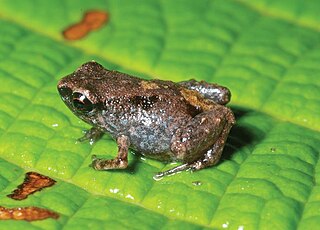 W
WAsterophryinae is a subfamily of microhylid frogs distributed in an area from the Peninsular Malaysia through the Malay Archipelago to northern Australia.
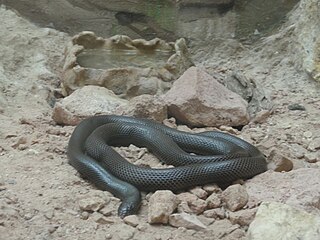 W
WThe Atractaspidinae are a subfamily of snakes found in Africa and the Middle East, commonly called mole vipers, stiletto snakes, or burrowing asps. Currently, 12 genera are recognized.
 W
WAzemiopinae is the name of a monogeneric subfamily created for the genus Azemiops that contains the venomous viper species A. feae and A. kharini. No subspecies are recognized. The first specimen was collected by Italian explorer Leonardo Fea, and was described as a new genus and new species by Boulenger in 1888. Formerly considered to be one of the most primitive vipers, molecular studies have shown that it is the sister taxon to the pit vipers, Crotalinae. It is found in the mountains of Southeast Asia in China, southeastern Tibet and Vietnam. Common names are Fea's vipers.
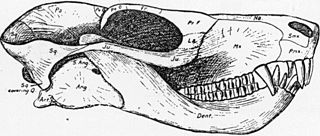 W
WBauriinae is an extinct subfamily of therocephalian therapsids. It is one of two subdivisions of the family Bauriidae, the other being Nothogomphodontinae.
 W
WThe Boinae are a subfamily of boas found in Central and South America as well as the West Indies. Six genera are currently recognized.
 W
WBoodontinae is a subfamily of colubrid snakes.
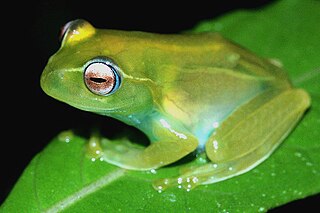 W
WBoophis is the only genus in the mantellid frog subfamily Boophinae. They are commonly known as bright-eyed or skeleton frogs. They show typical 'tree frog' traits, and are a good example of convergent evolution with morphologically similar species in the families Hylidae and Rhacophoridae, among others. This genus can only be found on Madagascar and Mayotte Island (Comoros).
 W
WThe Family Chamaeleonidae was divided into two subfamilies, Brookesiinae and Chamaeleoninae, by Klaver and Böhme in 1986. Under this classification, Brookesiinae included the genera Brookesia and Rhampholeon, as well as the genera later split off from them. The Brookesiinae are small, often brown in colour, and occur in central Africa and Madagascar. They have terrestrial habits, or may be found in the lower levels of shrubs. Since its erection in 1986, however, the validity of this subfamily designation has been the subject of much debate, although most phylogenetic studies support the notion that the pygmy chameleons of the subfamily Brookesiinae are not a monophyletic group. While some authorities have previously preferred to use the subfamilial classification on the basis of the absence of evidence principal, these authorities later abandoned this subfamilial division, no longer recognizing any subfamilies with the family Chamaeleonidae. In 2015, however, Glaw reworked the subfamilial division by placing only the genera Brookesia and Palleon within the Brookesiinae subfamily, with all other genera being placed in Chamaeleoninae.
 W
WA caiman is an alligatorid crocodilian belonging to the subfamily Caimaninae, one of two primary lineages within Alligatoridae, the other being alligators.
 W
WThe Calamariinae are a subfamily of colubrid snakes, commonly known as reed snakes, that are found in southern and southeastern Asia. They are most diverse in Indonesia, especially Sumatra and Borneo. The subfamily contains 90 species in seven genera. Very few specimens of most species have been collected.
 W
WCandoia is a genus of non-venomous boas found mostly in New Guinea and Melanesia. Five species are recognized as being valid. Common names include: bevel-nosed boas, keel-scaled boas.
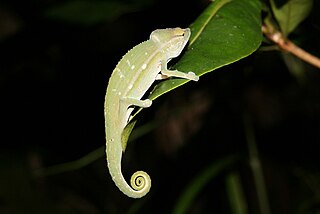 W
WChamaeleoninae is the nominotypical subfamily of chameleons. The Family Chamaeleonidae was divided into two subfamilies, Brookesiinae and Chamaeleoninae, by Klaver and Böhme in 1986. Since its erection in 1986, however, the validity of this subfamily designation has been the subject of much debate, although most phylogenetic studies support the notion that the pygmy chameleons of the subfamily Brookesiinae are not a monophyletic group. While some authorities have previously preferred to use the subfamilial classification on the basis of the absence of evidence principal, these authorities later abandoned this subfamilial division, no longer recognizing any subfamilies with the family Chamaeleonidae. In 2015, however, Glaw reworked the subfamilial division by placing only the genera Brookesia and Palleon within the Brookesiinae subfamily, with all other genera being placed in Chamaeleoninae.
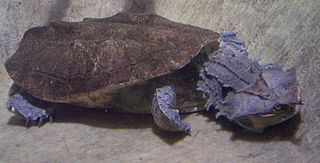 W
WChelidae is one of three living families of the turtle/tortoise suborder Pleurodira, and are commonly called Austro-South American side-neck turtles. The family is distributed in Australia, New Guinea, parts of Indonesia, and throughout most of South America. It is a large family of turtles with a significant fossil history dating back to the Cretaceous. The family is entirely Gondwanan in origin, with no members found outside Gondwana, either in the present day or as a fossil.
 W
WThe Colubrinae are a subfamily of the family Colubridae of snakes. It includes numerous genera, and although taxonomic sources often disagree on the exact number, The Reptile Database lists 717 species in 92 genera as of September 2019. It is the second largest subfamily of colubrids, after Dipsadinae. Many of the most commonly known snakes are members of this subfamily, including rat snakes, king snakes, milk snakes, vine snakes, and indigo snakes.
 W
WCophylinae is a subfamily of microhylid frogs endemic to Madagascar. It has over 100 species in eight genera. Members of this subfamily range from minute to fairly large, and they are highly ecologically diverse. DNA barcode research has revealed a significant taxonomic gap in this subfamily, and an estimated 70+ candidate species were identified. Many of these have subsequently been described, as well as numerous new discoveries.
 W
WCrocodiles or true crocodiles are large semiaquatic reptiles that live throughout the tropics in Africa, Asia, the Americas and Australia. Crocodylinae, all of whose members are considered true crocodiles, is classified as a biological subfamily. A broader sense of the term crocodile, Crocodylidae, is not used in this article. The term crocodile here applies to only the species within the subfamily of Crocodylinae. The term is sometimes used even more loosely to include all extant members of the order Crocodilia, which includes the alligators and caimans, the gharial and false gharial, and all other living and fossil Crocodylomorpha.
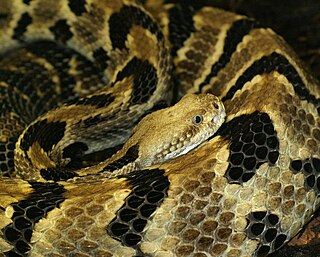 W
WThe Crotalinae, commonly known as pit vipers, crotaline snakes, or pit adders, are a subfamily of venomous vipers found in Eurasia and the Americas. They are distinguished by the presence of a heat-sensing pit organ located between the eye and the nostril on both sides of the head. Currently, 22 genera and 151 species are recognized: These are also the only viperids found in the Americas. The groups of snakes represented here include rattlesnakes, lanceheads, and Asian pit vipers. The type genus for this subfamily is Crotalus, of which the type species is the timber rattlesnake, C. horridus.
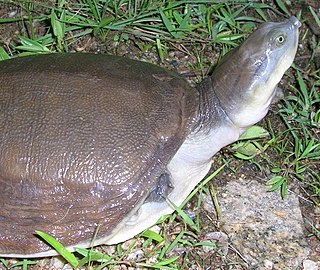 W
WCyclanorbinae, also known as the flapshell turtles, is a subfamily of softshell turtles in the family Trionychidae. The subfamily is native to Africa and Asia.
 W
WThe Draconinae are a subfamily of reptiles in the family Agamidae found in southern Asia and Oceania. Some taxonomists believe these genera belong to the subfamily Agaminae.
 W
WTomato frogs are any of the three species of genus Dyscophus : D. antongilii, D. insularis, or D. guineti. Dyscophus is the only genus in subfamily Dyscophinae. They are endemic to Madagascar. The three Dyscophus species differ in chromatin pattern. Both sexes of D. guineti show a heteromorphic chromosome pair 11, with one element larger (11a) than the other 11b due to the presence of the large terminal tract on the short arm with an euchromatic band enclosed between two heterochromatic bands. This condition in dyscophus probably characterizes the beginning of a cladogenetic process.
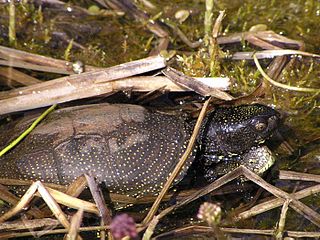 W
WThe Emydinae are a subfamily of turtles in the family Emydidae.
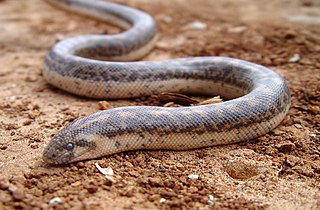 W
WThe Erycinae are a subfamily of nonvenomous snakes in the family Boidae. Species of the subfamily Erycinae are found in Europe, Asia Minor, Africa, Arabia, central and southwestern Asia, India, Sri Lanka, and western North America. Three genera comprising 15 species are currently recognized as being valid.
 W
WGekkoninae is a diverse subfamily of the family Gekkonidae, geckos. It has the most species and genera — over 850 species in 30 genera. Hemidactylus and Cyrtodactylus together account for 185 species.
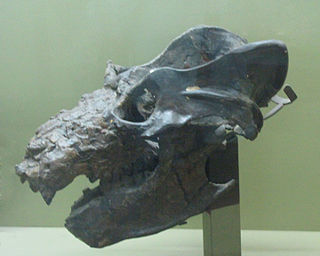 W
WGomphodontosuchinae is a subfamily of Triassic traversodontid cynodonts. It includes the genera Gomphodontosuchus, Exaeretodon, Menadon, Protuberum, Ruberodon and Scalenodontoides.
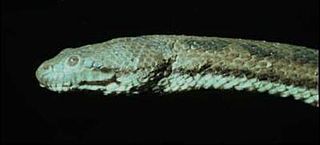 W
WThe Homalopsidae are a family of snakes which contains about 28 genera and more than 50 species. They are commonly known as Indo-Australian water snakes, mudsnakes, or bockadams. They are also known as ular air in Indonesian. They are typically stout-bodied water snakes, and all are mildly venomous. Two monotypic genera are notable for their unusual morphology: Erpeton possesses a pair of short, fleshy appendages protruding from the front of the snout, and Bitia has uniquely enlarged palatine teeth. Cerberus species have been noted to use sidewinding to cross slick mud flats during low tide. Fordonia and Gerarda are the only snakes known to tear their prey apart before eating it, pulling soft-shelled crabs through their coils to rip them apart prior to ingestion.
 W
WHylinae is the largest subfamily of the family Hylidae, the "tree frogs". It contains nearly 700 species in 41 genera. They are generally found in North and South America, Europe, temperate Asia, and Africa north of the Sahara.
 W
WInostranceviinae is an extinct subfamily of gorgonopsid therapsids that lived during the Late Permian. Only two genera are known, both from Russia.
 W
WLaliostominae is a subfamily of frogs in the family Mantellidae. It contains two genera and a total of seven species. These frogs are native to Madagascar.
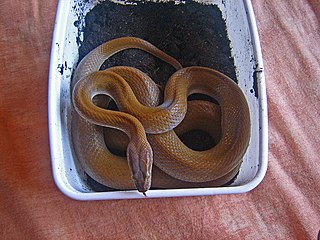 W
WLamprophiinae is a subfamily of lamprophiid snakes, a large group of mostly African snakes most of which were formerly classified as colubrids but which we now know are actually more closely related to elapids.
 W
WThe Leiuperinae are a subfamily of frogs in the family Leptodactylidae. Over 90 species are in five genera. The distribution of this subfamily is from southern Mexico to the Central America and much of South America.
 W
WThe Leptodactylinae are a subfamily of leptodactylid frogs distributed between southern North America and South America to Brazil. Their sister taxon is the clade comprising the Leiuperinae and Paratelmatobiinae.
 W
WLoxommatinae is an extinct subfamily of baphetids, a group of early tetrapods from the Late Carboniferous period. It includes the genera Kyrinion, Loxomma, and Megalocephalus.
 W
WMantellinae is a subfamily of frogs in the family Mantellidae. These frogs are native to Madagascar and Mayotte. The species vary in size from under 25 mm to over 100 mm. The subfamily is most famous for the genus Mantella, which contains species that superficially resemble poison dart frogs of the tropical Americas, and have converged on similar aposematic colouration and toxins. As of 2 May 2016, there are 128 described species in this subfamily, but several more are described each year.
 W
WMassetognathinae is an extinct subfamily of cynodonts in the family Traversodontidae. It includes four species from the Middle and Late Triassic: Massetognathus pascuali from Argentina, Massetognathus ochagaviae and Santacruzodon hopsoni from southern Brazil, and Dadadon isaloi from Madagascar. Massetognathines have several distinguishing characteristics, including flattened skulls, small canine teeth, and postcanine teeth with three cusps on their outer edges. Massetgognathinae was defined by Kammerer et al. (2012) as the clade containing all traversodontids more closely related to Massetognathus pascuali than to Gomphodontosuchus brasiliensis, and is the sister taxon of the traversodontid subfamily Gomphodontosuchinae, which was defined by Kammerer et al. (2008) as all traverodontids more closely related to G. brasiliensis than to M. pascuali.
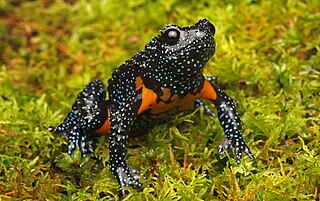 W
WMelanobatrachus is a genus of narrow-mouthed frogs in the family Microhylidae. It is the only remaining genus in the monotypic subfamily Melanobatrachinae. Two African genera, Hoplophryne Barbour & Loveridge, 1928 and Parhoplophryne Barbour & Loveridge, 1928, that were previously placed in this subfamily are now in a subfamily of their own, Hoplophryninae. It contains a single species, Melanobatrachus indicus, also known as the Indian black microhylid frog and Malabar black narrow-mouthed frog. It is endemic to wet evergreen forests of southern Western Ghats in Kerala and Tamil Nadu states of India. It has been recorded from Anaimalai, Munnar, Palni hills, Periyar Tiger Reserve and Kalakkad Mundanthurai Tiger Reserve
 W
WThe Microhylinae are a subfamily of microhylid frogs.
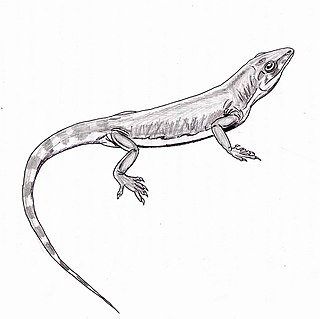 W
WVaranopidae is an extinct family of amniotes that resembled monitor lizards and may have filled a similar niche, hence the name. Typically, they are considered synapsids that evolved from an Archaeothyris-like synapsid in the Late Carboniferous. However, some recent studies have recovered them being taxonomically closer to diapsid reptiles. A varanopid from the latest Middle Permian Pristerognathus Assemblage Zone is the youngest known varanopid and the last member of the "pelycosaur" group of synapsids.
 W
WThe Natricinae are a subfamily of snakes in the family Colubridae. The subfamily comprises 37 genera. Members include many very common snake species, such as the European grass snakes, and the North American water snakes and garter snakes. Some Old World members of the subfamily are known as keelbacks, because their dorsal scales exhibit strong keeling.
 W
WNycteroleterinae is a subfamily of procolophonian parareptiles from the Middle Permian of Asia and North America.
 W
WThe Pelodryadinae are a subfamily of frogs. The classification of this taxon is disputed.
 W
WPhyllomedusidae is a family of frogs found in the Neotropics commonly called leaf frogs. Alternatively, they are often considered as a subfamily of the family Hylidae, the tree frogs.
 W
WA newt is a salamander in the subfamily Pleurodelinae. The terrestrial juvenile phase is called an eft. Unlike other members of the family Salamandridae, newts are semiaquatic, alternating between aquatic and terrestrial habitats. Not all aquatic salamanders are considered newts, however. More than 100 known species of newts are found in North America, Europe, North Africa and Asia. Newts metamorphose through three distinct developmental life stages: aquatic larva, terrestrial juvenile (eft), and adult. Adult newts have lizard-like bodies and return to the water every year to breed, otherwise living in humid, cover-rich land habitats.
 W
WPsammophiinae is a subfamily of lamprophiid snakes.
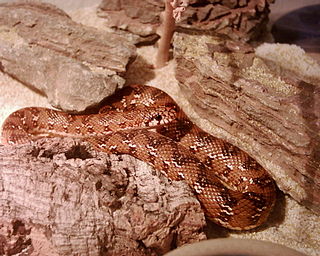 W
WPseudaspidinae is a small subfamily of lamprophiid snakes.
 W
WPseudoxenodontinae is a small subfamily of colubrid snakes found in southern and southeastern Asia, from northeast India to southern China and south into Indonesia as far east as Wallace's Line. There are 10 species in 2 genera. Most are very poorly known, such that Pseudoxenodontinae is one of the most poorly known groups of snakes.
 W
WThe Pseudoxyrhophiinae are a subfamily of lamprophiid snakes, found mostly in Madagascar.
 W
WPyxicephalinae is a subfamily of frogs under the family Pyxicephalidae.
 W
WThe Rhacophorinae are a subfamily of frogs in the family Rhacophoridae. They range from tropical Africa and Asia to temperate China and Japan.
 W
WRubidgeinae is an extinct subfamily of gorgonopsid therapsids known only from Africa. They were among the largest gorgonopsians, and their fossils are common in the Cistecephalus and Daptocephalus assemblage zones of the Karoo Basin. They lived during the Late Permian, and became extinct at the end of the Permian.
 W
WThe Sanziniinae are a subfamily of boid snakes containing four species endemic to the island of Madagascar.
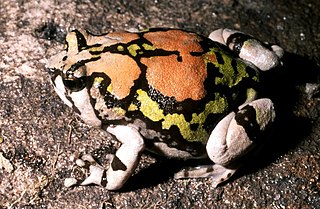 W
WThe Scaphiophryninae are a subfamily of microhylid frogs native to Madagascar.
 W
WSibynophiinae is a small subfamily of colubrid snakes commonly called hinged-teeth snakes. This group has also been called Scaphiodontophiinae but since the name Sibynophiinae is older, it has priority.
 W
WSinovenatorinae is a subfamily of the extinct bird-like troodontid dinosaurs known exclusively from the Early Cretaceous of China. It includes the genus Sinovenator as well as several related genera.
 W
WThe Trionychinae are a subfamily of turtles in the family Trionychidae.
 W
WUroplatinae is a subfamily of geckos in the family Gekkonidae. At least 28 genera have been found to be cluster in a clade together. In the past this was once a monotypic subfamily that included Uroplatus.
 W
WVaranopidae is an extinct family of amniotes that resembled monitor lizards and may have filled a similar niche, hence the name. Typically, they are considered synapsids that evolved from an Archaeothyris-like synapsid in the Late Carboniferous. However, some recent studies have recovered them being taxonomically closer to diapsid reptiles. A varanopid from the latest Middle Permian Pristerognathus Assemblage Zone is the youngest known varanopid and the last member of the "pelycosaur" group of synapsids.
 W
WThe Viperinae, or viperines, are a subfamily of venomous vipers endemic to Europe, Asia and Africa. They are distinguished by their lack of the heat-sensing pit organs that characterize their sister group, the subfamily Crotalinae. Currently, 13 genera are recognized. Most are tropical and subtropical, although one species, Vipera berus, even occurs within the Arctic Circle.
 W
WXenodontinae is a subfamily of snakes in the family Dipsadidae.